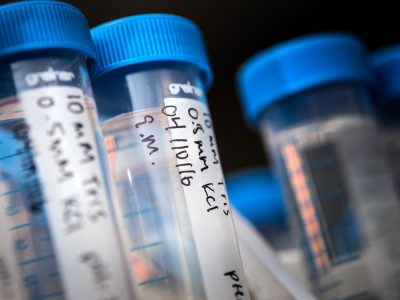By Dan Rubinstein
Photos by Chris Roussakis
During his PhD research, Québec-born astroparticle physicist Simon Viel worked on the ATLAS experiment at the Large Hadron Collider (LHC), a 27-kilometre ring of superconducting magnets colliding protons and heavy ions beneath the French-Swiss border near Geneva.
He remained involved with ATLAS — the largest particle detector ever built, and one of four major experiments at the LHC — during his postdoctoral fellowship at California’s Lawrence Berkeley National Laboratory.
But last year, Viel wanted to come back to Canada to continue his research. Which was perfect timing, because the birth of the Arthur B. McDonald Canadian Astroparticle Physics Research Institute (originally the Canadian Particle Astrophysics Research Centre) included federal funding to create 15 new faculty positions, including his post in Carleton’s Department of Physics.
“There’s a very nice synergy here,” says Viel, whose interest in dark matter research and past experience with particle detectors mesh well with Carleton’s focus on experimental astroparticle physics. “Canadian physicists, including researchers at Carleton, are really strong in this field, and the creation of the McDonald Institute will help us make more scientific progress in the future.”
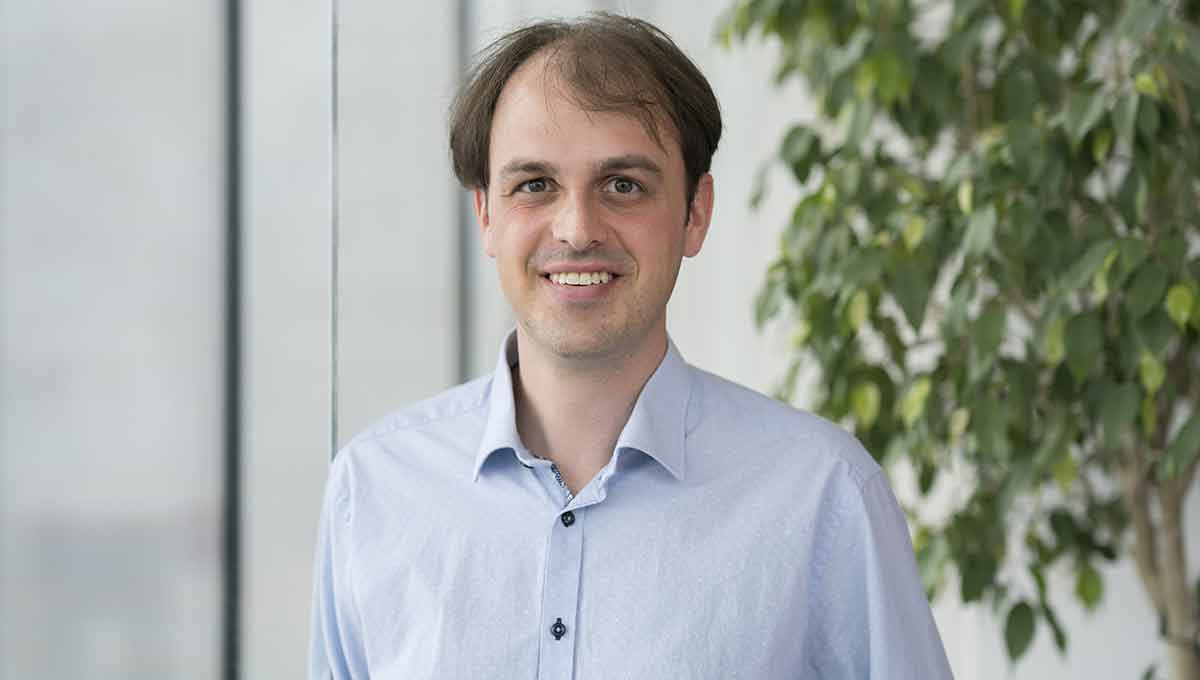
Prof. Simon Viel
The institute, based at Queen’s University in Kingston, Ont., and comprised of eight university partners and five affiliated research organizations, including Sudbury’s SNOLAB, was established thanks to a $63.7-million investment from the Canada First Research Excellence Fund.
On May 10, the McDonald Institute was formally launched and renamed in honour of 2015 Nobel Prize winner and Queen’s emeritus professor, Arthur B. McDonald, a long-time collaborator of Carleton Distinguished Research Prof. David Sinclair, one of SNOLAB’s pioneering scientists.
As the institute’s website proclaims: “Particle astrophysics is the study of the fundamental properties of the most basic building blocks of nature, and their influence on the evolution of structure in the universe. The questions being addressed in this field are considered worldwide to be amongst the most important in physics today.”
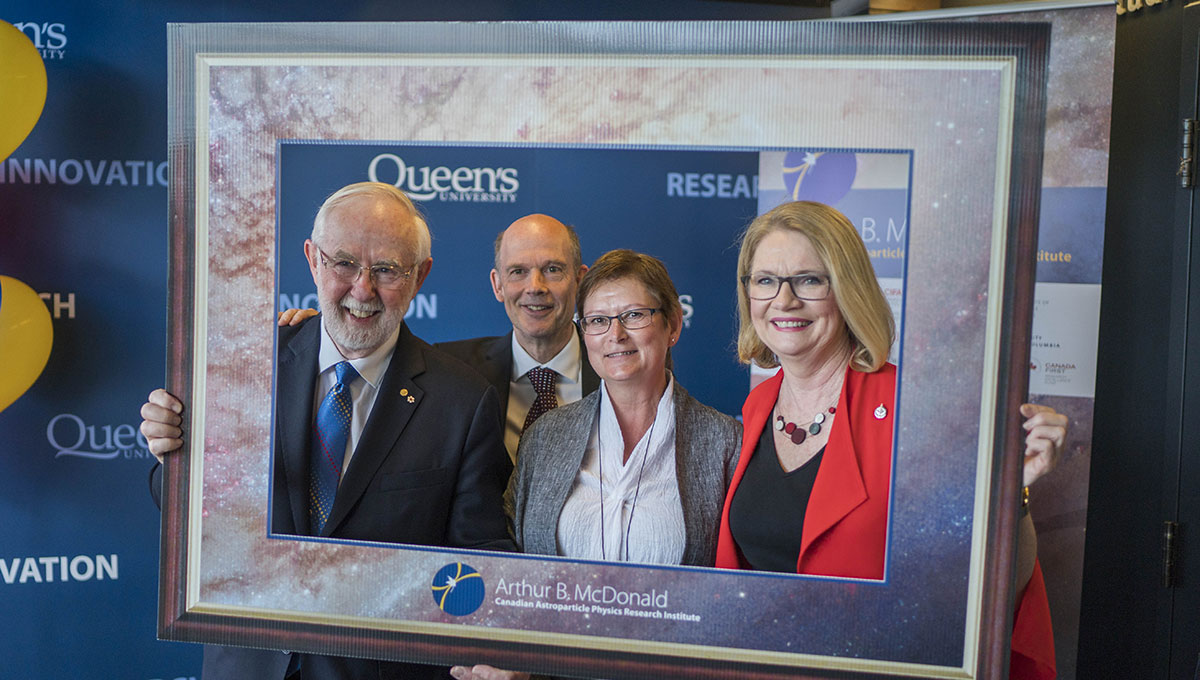
McDonald Institute Seeks Answers to the Most Important Questions in Physics
From their founding role in the Sudbury Neutrino Observatory (SNO) experiment two kilometres below the Earth’s surface in an active mine to its evolution into the world-class SNOLAB facility, which is home to many experiments, including the DEAP-3600 search for dark matter, Carleton researchers have long been at the forefront of the international astroparticle physics community.
Viel knew about Carleton’s reputation in particle physics while doing his postdoc at Berkeley and his PhD at TRIUMF (the Vancouver-based particle accelerator centre) and the University of British Columbia (a McDonald Institute partner). He liked the commitment of Carleton’s Physics Department to be a national and international leader – not only in experimental particle physics – but also the related fields of theoretical physics and medical physics.
But the formation of the McDonald Institute — and an opportunity to collaborate closely with astroparticle physicists at Carleton such as Prof. Mark Boulay, DEAP-3600’s project director — was the catalyst that brought Viel back to Canada in August 2017.
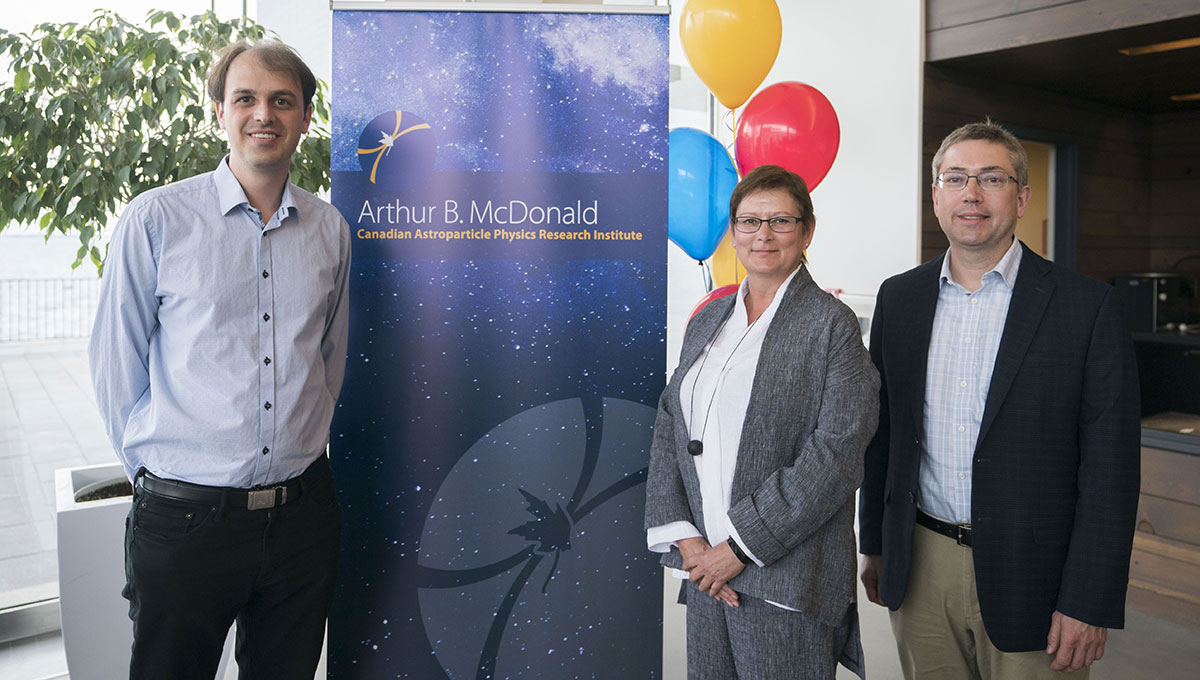
From left to right: Prof. Simon Viel, Sandra Crocker, associate vice-president (Strategic Initiatives and Operations) and Prof. Mark Boulay
One of his primary research goals is to develop software for detector simulation, event reconstruction and data analysis for DEAP-3600, a detector at SNOLAB, filled with more than three tonnes of liquid argon, that could allow scientists to observe and identify dark matter by tracking the faint light pulses that result from the elastic scattering of dark matter particles when they hit argon nuclei.
Dark matter is an invisible substance which is thought to account for roughly one-quarter of the universe’s energy density. It is believed to outweigh normal matter (which includes the atoms we are familiar with) by a factor of five to one, even though its existence has so far only been inferred by its gravitational effects on stars and galaxies and other indirect measurements.
Viel is also working on next-generation liquid argon experiments to look for dark matter, and evaluating the suitability of silicon photomultipliers (SiPM) to detect scintillation light from liquid argon and xenon for future large-scale low-background experiments.
He is currently part of the international DEAP-3600 team analyzing data from the detector’s first year of operation, with a paper on their findings expected in the months ahead. McDonald is still an active participant in day-to-day discussions with the team, says Viel, noting the value of having a researcher of his prominence as an advocate for this experimental approach.
DEAP-3600 is scheduled to take data until the beginning of 2020, but Viel and his collaborators are already planning ahead for DarkSide-20k, a detector with 20 tonnes of liquid argon that’s scheduled to start acquiring data at Italy’s Laboratori Nazionali del Gran Sasso in 2021.
“The larger the target, the more sensitivity we have to very rare occurrences,” says Viel. “To build such large detectors, we need large collaborations. The formation of the McDonald Institute allowed for the hiring of many new people to work together, and allowed a group of Canadian universities and institutes to put their resources together towards this goal.”

A Global Research Collaboration
Beyond DarkSide-20k, Viel is already looking ahead to a future multi-hundred tonnes liquid argon dark matter experiment that’s currently being designed by the recently-formed Global Argon Dark Matter Collaboration.
“Dr. McDonald has played a key role in bringing together all of the world’s scientists working on liquid argon dark matter searches,” says Viel, “to form this global collaboration.”
In addition to advancing fundamental knowledge and developing new technologies that could have applications in areas other than astrophysics — such as medical physics, security and the automotive sector — the McDonald Institute has a public outreach mandate.
After our exciting announcement event at the @queensuisabel last Thursday, we unveiled our brand new Visitor Centre to the local community! It will serve as a great #scicomm resource and a connection point between scientists and the public.https://t.co/3v2l8WxP1s pic.twitter.com/v4as4QCgEC
— McDonald Institute (@McDonaldInst) May 14, 2018
A new visitor centre in Stirling Hall at Queen’s will feature a virtual reality setup that will allow guests to travel though space and experience a solar storm. The centre will also have an augmented reality sandbox that will teach guests about gravitational fields in an interactive and tactile manner.
“It’s important to communicate to Canadians about the work we’re doing and the impact of our research,” says Viel, “not least because ultimately they’re the ones who are funding it. I am very grateful for the amazing research opportunities this creates, and am looking forward to sharing our results with everyone.”
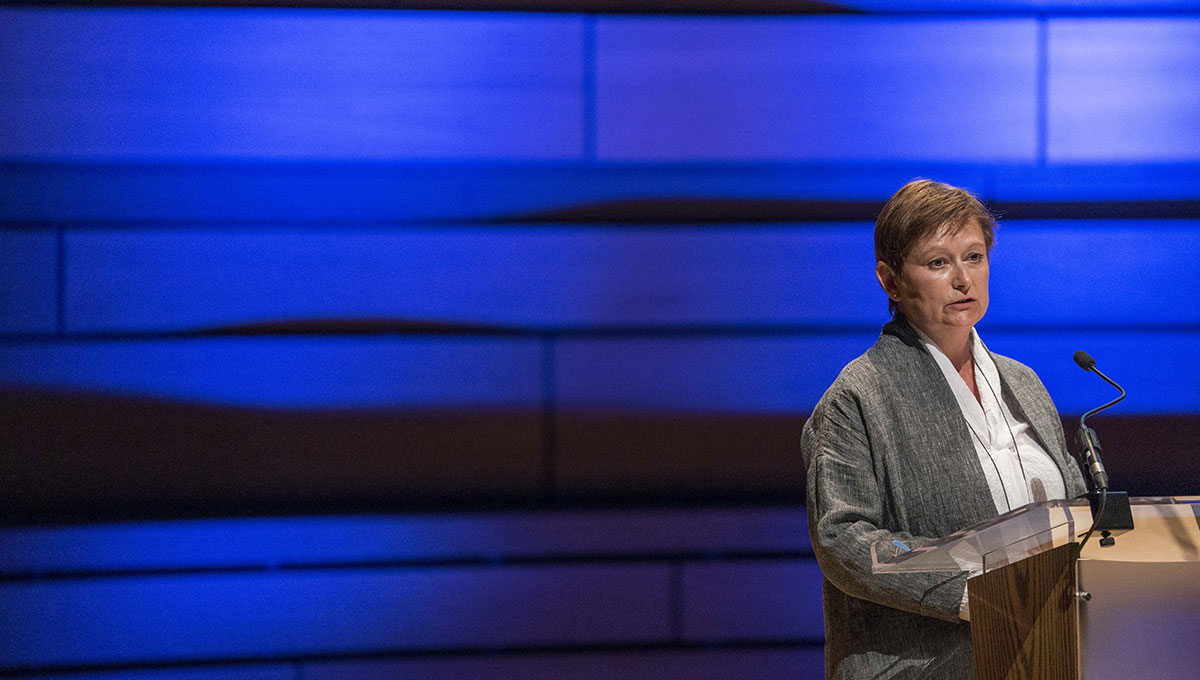
Monday, May 14, 2018 in Faculty of Science, Research
Share: Twitter, Facebook

